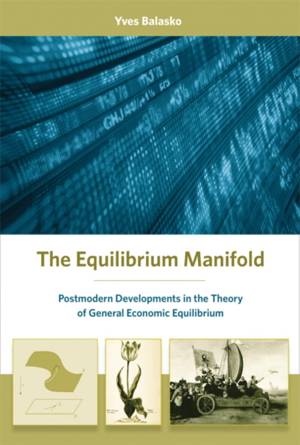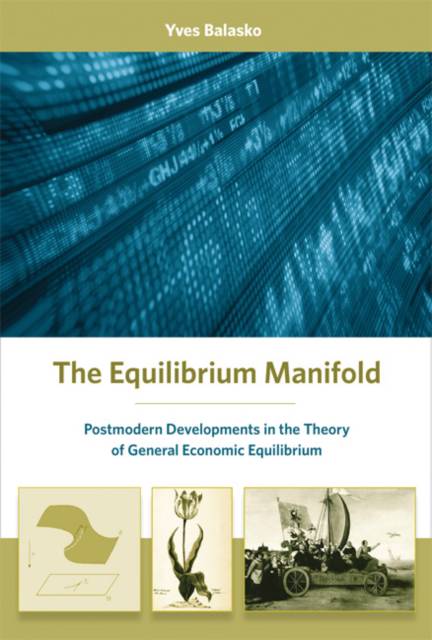
- Afhalen na 1 uur in een winkel met voorraad
- Gratis thuislevering in België vanaf € 30
- Ruim aanbod met 7 miljoen producten
- Afhalen na 1 uur in een winkel met voorraad
- Gratis thuislevering in België vanaf € 30
- Ruim aanbod met 7 miljoen producten
The Equilibrium Manifold
Postmodern Developments in the Theory of General Economic Equilibrium
Yves BalaskoOmschrijving
A leading scholar in the field presents post-1970s developments in the theory of general equilibrium, unified by the concept of equilibrium manifold.
In The Equilibrium Manifold, noted economic scholar and major contributor to the theory of general equilibrium Yves Balasko argues that, contrary to what many textbooks want readers to believe, the study of the general equilibrium model did not end with the existence and welfare theorems of the 1950s. These developments, which characterize the modern phase of the theory of general equilibrium, led to what Balasko calls the postmodern phase, marked by the reintroduction of differentiability assumptions and the application of the methods of differential topology to the study of the equilibrium equation.
Balasko's rigorous study demonstrates the central role played by the equilibrium manifold in understanding the properties of the Arrow-Debreu model and its extensions. Balasko argues that the tools of differential topology articulated around the concept of equilibrium manifold offer powerful methods for studying economically important issues, from existence and uniqueness to business cycles and economic fluctuations. After an examination of the theory of general equilibrium's evolution in the hundred years between Walras and Arrow-Debreu, Balasko discusses the properties of the equilibrium manifold and the natural projection. He highlights the important role of the set of no-trade equilibria, the structure of which is applied to the global structure of the equilibrium manifold. He also develops a geometric approach to the study of the equilibrium manifold.
Applications include stability issues of adjustment dynamics for out-of-equilibrium prices, the introduction of price-dependent preferences, and aspects of time and uncertainty in extensions of the general equilibrium model that account for various forms of market frictions and imperfections. Special effort has been made at reducing the mathematical technicalities without compromising rigor. The Equilibrium Manifold makes clear the ways in which the postmodern" developments of the Arrow-Debreu model improve our understanding of modern market economies.
Specificaties
Betrokkenen
- Auteur(s):
- Uitgeverij:
Inhoud
- Aantal bladzijden:
- 225
- Taal:
- Engels
- Reeks:
Eigenschappen
- Productcode (EAN):
- 9780262026543
- Verschijningsdatum:
- 1/05/2009
- Uitvoering:
- Hardcover
- Formaat:
- Genaaid
- Afmetingen:
- 152 mm x 229 mm
- Gewicht:
- 453 g

Alleen bij Standaard Boekhandel
Beoordelingen
We publiceren alleen reviews die voldoen aan de voorwaarden voor reviews. Bekijk onze voorwaarden voor reviews.











